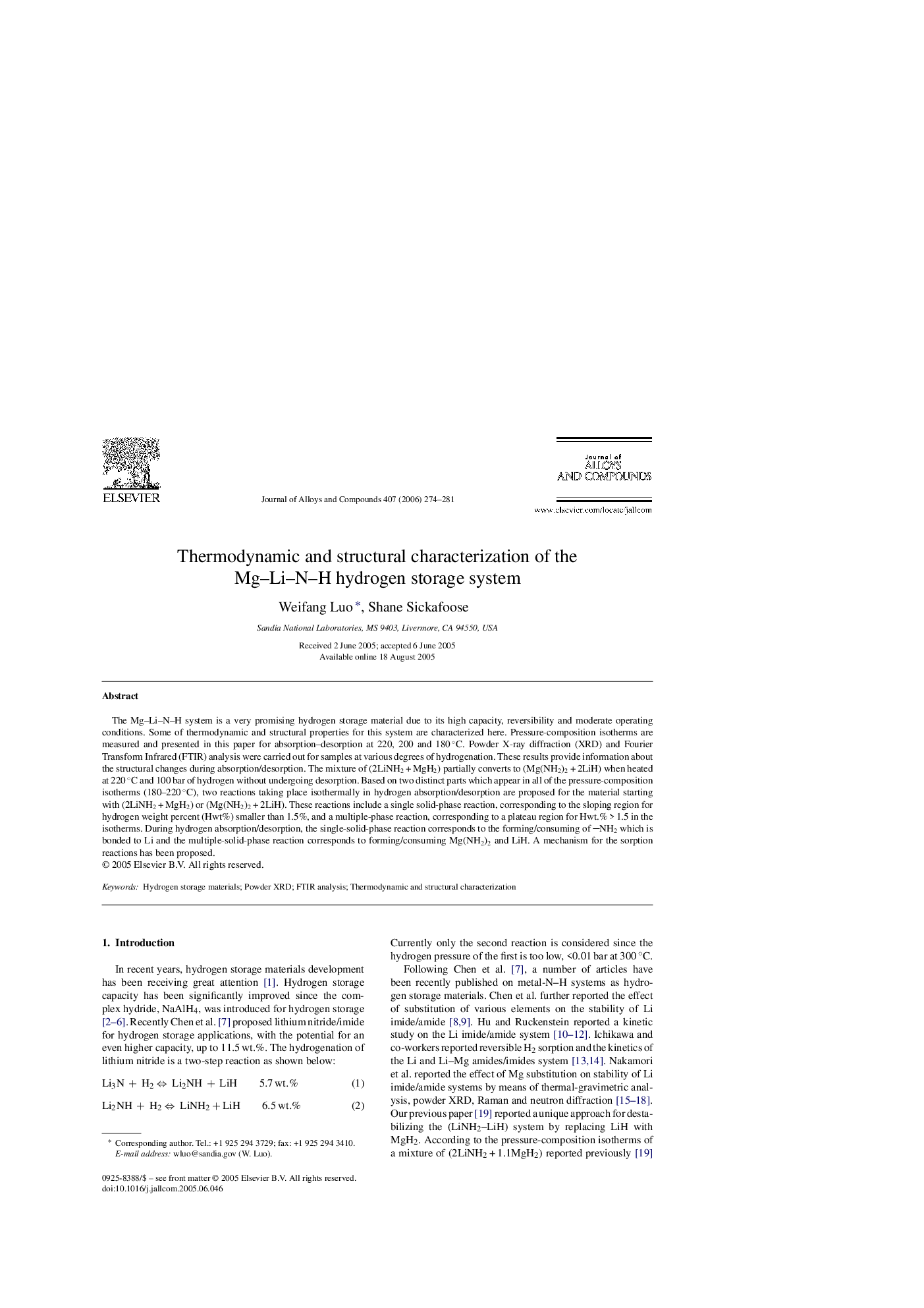| Article ID | Journal | Published Year | Pages | File Type |
|---|---|---|---|---|
| 1628025 | Journal of Alloys and Compounds | 2006 | 8 Pages |
The Mg–Li–N–H system is a very promising hydrogen storage material due to its high capacity, reversibility and moderate operating conditions. Some of thermodynamic and structural properties for this system are characterized here. Pressure-composition isotherms are measured and presented in this paper for absorption–desorption at 220, 200 and 180 °C. Powder X-ray diffraction (XRD) and Fourier Transform Infrared (FTIR) analysis were carried out for samples at various degrees of hydrogenation. These results provide information about the structural changes during absorption/desorption. The mixture of (2LiNH2 + MgH2) partially converts to (Mg(NH2)2 + 2LiH) when heated at 220 °C and 100 bar of hydrogen without undergoing desorption. Based on two distinct parts which appear in all of the pressure-composition isotherms (180–220 °C), two reactions taking place isothermally in hydrogen absorption/desorption are proposed for the material starting with (2LiNH2 + MgH2) or (Mg(NH2)2 + 2LiH). These reactions include a single solid-phase reaction, corresponding to the sloping region for hydrogen weight percent (Hwt%) smaller than 1.5%, and a multiple-phase reaction, corresponding to a plateau region for Hwt.% > 1.5 in the isotherms. During hydrogen absorption/desorption, the single-solid-phase reaction corresponds to the forming/consuming of NH2 which is bonded to Li and the multiple-solid-phase reaction corresponds to forming/consuming Mg(NH2)2 and LiH. A mechanism for the sorption reactions has been proposed.
